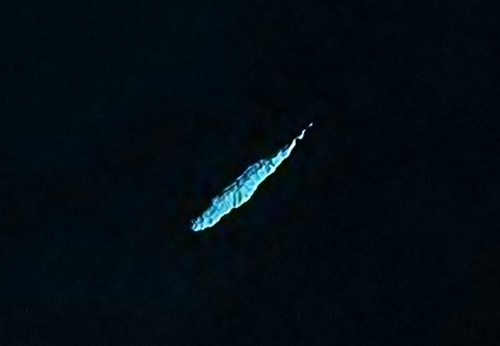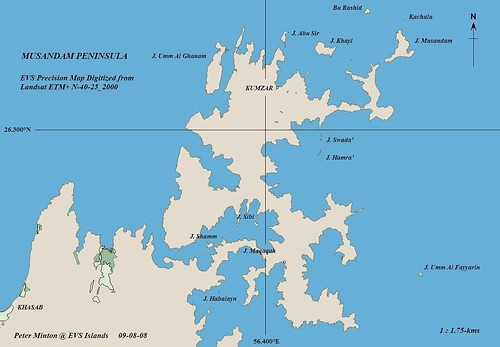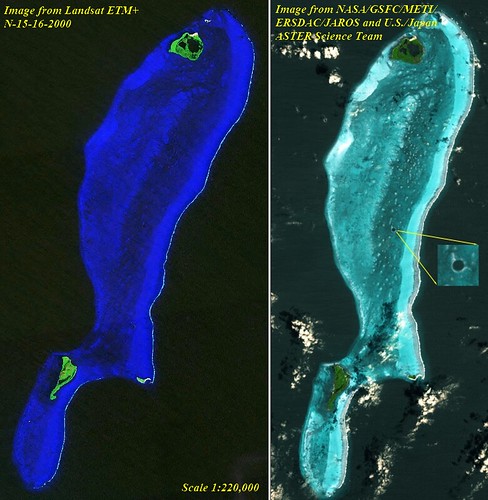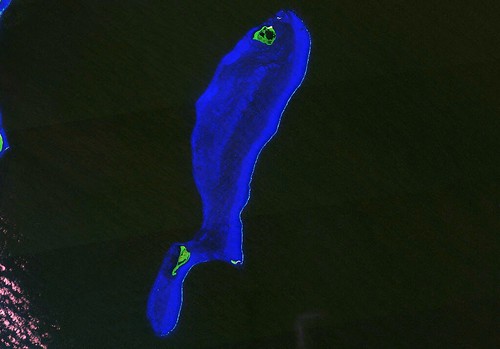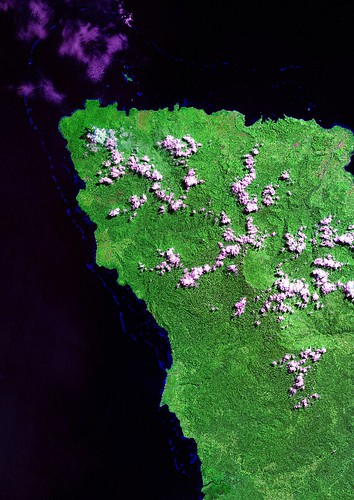
New Britain Island - Landsat ETM+ S-56-00_2000 Image (1-375,000) Northwestern End

New Britain Island - EVS Precision Map (1:75,000) Northwestern End (Select image to see full-size)
I'm such a pushover when it comes to reader-requested mapping projects. Some of the projects are relatively simple (a single island with a couple of layers of information), others more complex (a single island with many layers of information) and finally the very complex or lengthy mapping project consisting of many layers of information or covering a large area with a variety of detail. My last mapping project, the northwestern end of New Britain Island, covered a large area and the reader was keenly interested in the offshore reefs.
Back in January 2009 the reader's initial query was deceptively simple, "Have you done any reefs in New Britain, Papua New Guinea?" During the summer of 2008, I had mapped all of the islands located between and including Papua New Guinea to the Cook Islands which consisted of over 10,000 island polygons using Landsat ETM+ as my base imagery. One of those islands was New Britain. I figured the project would be a snap. The reader was only interested in the northwestern end of New Britain. I would ensure my original island polygon was sufficiently accurate and then I would digitize and classify all reefs into a single vector layer called Reef Shallow. No problem!
Along with trying to be an attentive husband, loving father, generous grandfather, concerned and effective teacher and all-around good guy, my life got very busy. So busy that the New Britain Reef project got pushed behind my busy life. I informed the reader that I would have to table his project for the time being and since the project was "gratis", he waited. And so the New Britain Reef project resided in my computer waiting for my return. All of the shoreline was finished along with a portion of the reefs. My initial work had taken about 20-hours to complete. The week before last, the patient reader asked if I would have an opportunity to complete the project. Frankly, I had forgotten about it. Feeling guilty for not completing it way back when and knowing that I had a week's vacation coming, I promised to finish the project. And I did! It took about 10 more hours, but I finished it!
I studied my completed work and realized that this mapped area was really large. Since this reader did not require my vector files, I would have normally sent the reader a screenshot (raster image) the size of an 8.5 X 11 page of their project and that would be the end of it. However, this reader would be unable to appreciate the detailed reef information at that scale (1:350,000). I decided to construct a large format map at a scale of 1:75,000 giving the reader sufficient detail for his ultimate purpose, finding new fishing locations.
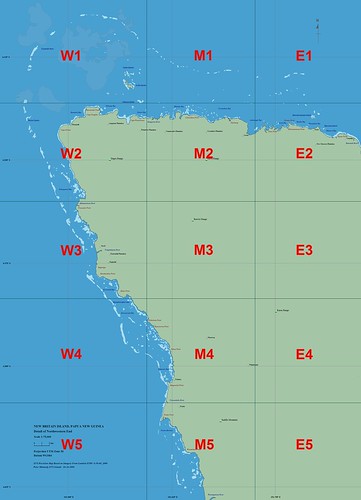
New Britain Island - EVS Precision Map (1-75,000) Northwestern End with Map Tile Labels
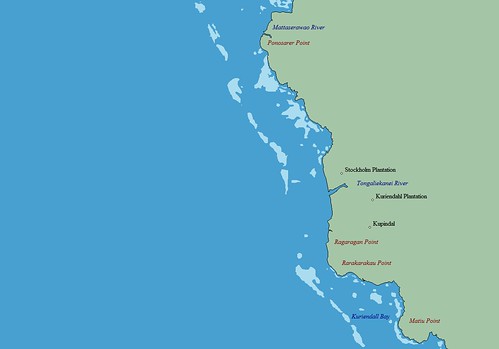
1 of 15 EVS Precision Map Tiles (W3)
I have constructed numerous image mosaics, but never a map mosaic. Using images from Global Mapper and mosaicking them into a single image using Image Forge software and finally constructing lat/lon grid lines in MS Draw, I created "a really big map" (thus the title of this post). All of you mapping professionals, calm down. I know mapping software exists that will make "a really big map" in a single step. Typically, it costs money and that's something I don't have much of. Anyway, back to my mosaicked map. "The really big map" consists of 15 tiles , each tile similar to the one displayed in the above image. My final map is 3050 X 4220 pixels in size or about 65 x 89 cms (25.5" x 35").
My final thought, I've got to start charging for my work! I spent 30+ hours on this project. At a modest fee of $20 per hour, I should have made $600 for this project. Instead, New Britain Island's northwestern end is mapped in great detail and I'm none the richer for it.
Enjoy!

